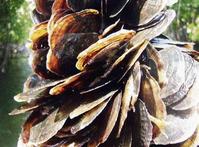
Oysters from the Port Royal mangroves. - photo by paul Williams In general, seafood is an excellent source of vitamins, including iodine which is essential for the thyroid gland functioning iron for red cell formation, and zinc is required for wound healing.
When handled properly, finfish and shellfish are as safe to eat as any other source of protein.
Researchers note that seafood is also especially rich in niacin, essential for a healthy skin and for the release of energy in the body and vitamin B complex needed for metabolic processes. Oysters, mussels and scallops are excellent sources of iron and zinc. Oysters and mussels researchers state, have nearly three times as much iron as most meats and are the richest food source of zinc.
calcium
Oysters, prawns and scallops contribute calcium, the mineral needed for healthy bones and teeth and for proper functioning of nerves and muscles. Individuals, however, should follow a few precautionary measures when preparing seafood.
Vibrio vulnificus is a bacterium that occurs naturally in warm marine waters. V. vulnificus infections are transmitted to humans either through open wounds in contact with seawater or by eating certain improperly cooked or raw shellfish.
While not a threat to most healthy people, V. vulnificus can cause sudden chills, fever, nausea, vomiting, blood poisoning and death within two days in people with certain medical conditions.
Forty per cent of V. vulnificus infections from raw oyster consumption are fatal. To ensure that the oysters that reach your family table are safe, you should:
Know your seafood seller
Purchase seafood carefully
Keep seafood cold
Cook seafood thoroughly
Oysters can be enjoyed as is or served with fresh lemon wedges, cocktail sauce, hot chili sauce, horseradish or barbecue sauce.
Information sources: www.gov.ns.ca andwww.seafoodsite.com
Handling and storage
1. Ensure oyster shells are tightly closed, clean and undamaged. An open shell should be discarded.
2. Refrigerate oysters in an open container and cover with a damp paper towel. Do not seal. Place the deep cup of the oyster shell down so juice will not escape. Properly stored, Atlantic oysters can be kept up to four weeks in the refrigerator.
3. Do not freeze oysters in the shell. Shucked oyster meat can be frozen with the strained oyster liquid. Thaw the frozen oyster meat in the refrigerator prior to eating.
4. Oysters can be eaten raw or cooked. Oyster should have good colour, smell of the sea and the liquid should be clear.

